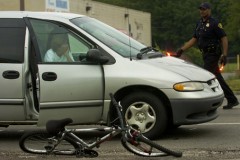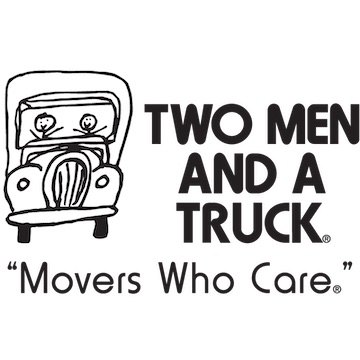Is “Sorry Mate I Didn’t See You” An Effective Legal Defense in Delaware?
Around 10 years ago, I was biking on Bancroft Parkway, keeping a safe following distance. The pickup truck ahead of me threw his vehicle in reverse and backed up a number of parking spaces. Because I stopped when he stopped, there was a curb to my left and parked cars to my right, there was little I could do. I was able to back up far enough so that he hit my bike and not me, although he knocked both it and me to the ground. He came flying out of his car repeating over and over, “I didn’t see you”. It didn’t matter. In spite of his protests, he got a ticket because the operator of a motor vehicle is required to see. Not seeing or being able to see when another is lawfully in the right of way is negligence, pure and simple.
Over the years, Delaware has passed laws that attempt to hold motorists more accountable for their actions, removing the burden of proof that required intent. Before the Warren Pritchett Act was signed into law in 2003, a motorist whose negligence caused the death of another was frequently charged with nothing more than a simple traffic offense, unless that motorist was intoxicated or intended to cause injury. Delaware’s “Vulnerable Users” law, passed in 2010, establishes criminal penalties for motorists who cause serious injury to a vulnerable user (such as a cyclist or pedestrian) who is lawfully in the right of way. This law implicitly acknowledges that the operator of a motor vehicle has an added responsibility towards those with less protection who are by definition less likely to cause damage to others. HB174, passed in 2011, strengthens criminal penalties for vehicular assault and homicide, and establishes a new crime, Vehicular Assault in the Third Degree, to cover situations where an individual causes injury to another person as a result of criminally negligent driving.
How does all of this impact cyclists (and pedestrians) and relate to SMIDSY? If a cyclist is lawfully on the roadway when hit–meaning that he or she was not in violation of the law, then the motorist would generally be presumed to be at fault. It’s the same as if you were driving a car and were struck from behind. The driver that hit you would have to prove that you were negligent in some way so that he/she was unable to avoid a collision. The concept of “last best chance” to avoid a crash also impacts who is considered to be at fault. This doesn’t always place the burden of proof squarely on the shoulders of the motorist, but it does help to provide parity. In a sense, if the laws are being applied and enforced correctly, SMIDSY (“Sorry Mate I Didn’t See You”) is clearly negligence and is not a viable defense, assuming the cyclist or pedestrian was lawfully on the roadway (for example, crossing in a crosswalk or biking along the right side of the road, appropriately visible, as opposed to biking against traffic in the dark with no lights or reflectors while wearing dark clothing). Even without the enhanced laws, it has always been a good part a matter of enforcement.
How would a law that specifically addresses SMIDSY, and that always places the burden of proof on the motorist, be beneficial? In many cases, the cyclist or pedestrian is injured and is not in a position to report what happened while the driver is fully capable. When there are no witnesses, the police officer may take the driver’s word, even though in a number of cases, the motorist will rationalize or even lie to protect him or herself. A lack of time, resources and/or knowledge on the part of the police officer may result in an insufficient investigation of these crimes. Unfortunately, there is no consistent and standardized training for police officers in Delaware (although I can’t speak for all jurisdictions) regarding matters related to bicycling. Laws pertaining to bicycles are not routinely covered in the State Police Academy, for example. And unfortunately, while there are certainly a number of wonderful and conscientious police officers who know the law, there are still too many officers who consider cyclists and pedestrians to be a nuisance and believe that they don’t belong on our roads. These officers tend to sympathize with the motorist.
That said, there could certainly be drawbacks to a “SMIDSY law”. I’m not an attorney so I don’t know the legal ramifications, but it seems to me that one serious drawback involves the number of incompetent and reckless cyclists and pedestrians using our roadways. For example, a week or two ago while walking to work in Wilmington after dropping my bike off at The Bike Boutique, I saw a man dart quickly across an intersection against the light. Fortunately, the approaching motorist was paying attention, had good reflexes and was going slowly enough to stop. What if, however, the pedestrian had dashed out half a second later? He would have been hit in spite of the driver’s best efforts. What to do, in that case, if there had been no witnesses?
In conclusion, I believe that we need to address weaknesses in enforcement and education that involve sharing our roads. Changing attitudes is the proverbial elephant in the corner. I also believe that we need to continue to improve and update our laws. But we must do so with care. Any bill that addresses SMIDSY will need to be well thought out.
—
Amy Wilburn is the chair of the Delaware Bicycle Council and the 2011 Delaware Bicycle Advocate of the Year.







5 Responses
Well, in Maine you can fall asleep at the wheel, run over and kill an elderly man out for a walk and get away without even a ticket.
http://www.pressherald.com/news/DA-Charges-unlikely-in-Shirley-pedestrian-fatal.html
Or you can speed around corners in your tractor-trailer, flip it over onto a van full of kids, killing one, and walk away with no charges.
http://bangordailynews.com/2011/12/07/news/lewiston-auburn/trucker-will-not-face-charges-in-fatal-crash-with-ymca-minivan/
It’s a messed up world we live in.
Unfortunately, incidents like these keep happening in most if not all states. The responsibility lies with the laws, enforcement, and education. And maybe most important, attitude. Until we take traffic crashes seriously and consider traffic crimes to be violent crimes, this type of thing will continue to happen. Why when it comes to cars do we accept so many fatalities and injuries, treat crashes almost invariably as just accidents no matter how negligent the driver, just a natural part of life? I’ve seen quite a few letters to the editor that question the number of tickets being issued by the police. The writers almost always wonder why the police aren’t going after the “real” criminals, like the burglars, instead.
The nice thing about what the Canadians and Dutch have done by putting the “onus of disproving negligence” on motorists
http://www.bikede.org/2011/11/28/stop-smidsy/
is that the need for effective, sympathetic and well-trained traffic enforcement is diminished. Under Canadian and Dutch law, the “presumption of liability” is automatically on the motorist whenever there is a car/pedestrian or car/bicycle crash.
As Amy points out, there will likely always be pressure on police to focus on violent crimes. That is the most important function of the police. Meanwhile, it can be very difficult (and enormously expensive and time consuming) to assign fault in an accident. (Indeed, some states (e.g. Florida, Michigan, New Jersey, New York and Pennsylvania) recognize this and as a result have “no-fault” insurance laws as a result.) It is probably unrealistic to expect a revolution in police enforcement in favor of pedestrians, bicyclists, people in wheelchairs, etc. with regard to liability. Probably the only way to get that more favorable legal environment for vulnerable users is to do what the Dutch and Canadians have done: put the “onus of disproving negligence” on motorists.
This would not be a “no-fault” law. It still comes down in large part to enforcement. I don’t think that the need for effective, sympathetic and well-trained officers will be diminished. As you point out, it can be very difficult (and enormously expensive and time consuming) to assign fault. Yet if the system is to be fair, the police will remain an important part of the process and investigations will need to be conducted. After all “innocent until proven guilty” is a major tenet of of our penal code. What are the standards for disproving negligence? How would this work without an investigation given our criminal justice system? Even in the case of civil liability. It would be one thing if cyclists and pedestrians were always responsible and in the right. But this is the real world. The state must still prove culpability or violate our basic principles, especially in the cases that really matter and include injuries or reckless behavior. We would need to and want to prove that. And we want to be able to prosecute offenders and apply penalties that fit the circumstances instead of giving a simple ticket. Traffic violations are sometimes violent crimes and we need to develop an understanding of that and take them seriously, which means that we can’t place the burden of proof on the accused as opposed to the state. The real world application of this type of legislation in Canada and the Netherlands needs to be studied carefully. In any case, SMIDSY legislation may be worthwile, but so as not to incur unintended consequences, I maintain that it should be well thought out.
Here’s another acronym to explain why a tort regime with regard to bicyclist fatalities that “comes down in large part to enforcement” cannot work: “SWSS” (ie the “Single Witness Suicide Swerve”). As Bob Sutterfield notes, when a bicyclist is killed and only the motorist is a witness, any motorist can claim that the “cyclist swerved unavoidably, and only the hapless motorist was there to observe the maneuver. Since everybody knows cyclists routinely and unpredictably swerve and veer and dart hither and yon like so many brightly-colored hummingbirds, no law enforcement officer or jury of the motorist’s peers would question their account.”
I think that the implications of the Canadian law have been well thought out: “When loss or damage is sustained by any person by reason of a motor vehicle on a highway, the onus of proof that the loss or damage did not arise through the negligence or improper conduct of the owner, driver, lessee or operator of the motor vehicle is upon the owner, driver, lessee or operator of the motor vehicle.” The Canadian/Dutch approach simply acknowledges (and writes into law) the asymmetric responsibility of motor vehicle owner/operators with regard to vulnerable road users. If you don’t place such asymmetric legal responsibility on the motor vehicle owner/operators, then you place motorists and bicyclists on a legal level playing field. And in practice, a legal collision between a motorist and a bicyclist that requires proof that the bicyclist was utterly blameless works out exactly as well for the bicyclist as a physical collision between a vehicle and a bicycle.